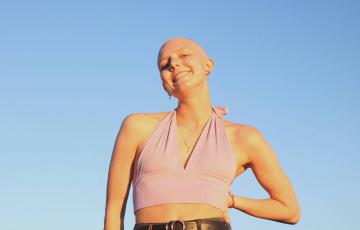Search Results
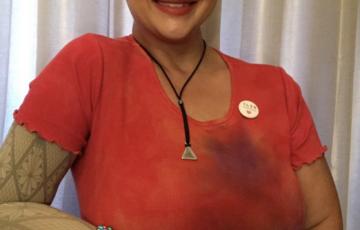
Renee
I was a senior in high school preparing to graduate. I had summer plans to work at my youth group camp and endless ideas for my future. That all came crashing down on May 27, 2002, when I was diagnosed with acute myeloid leukemia (AML). AML is a rare and rapidly growing cancer of the bone marrow that destroys the production of normal blood cells, red blood cells, and platelets. At the time of my diagnosis, my family was given devastating odds that only a miracle could fix. I was so dangerously sick that I needed multiple transfusions immediately, and that was just the beginning.
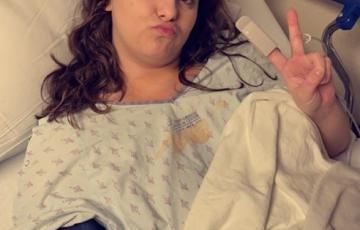
Carly
November 25, 2022 ― the worst day of my life, the day I received my official cancer diagnosis, stage IV Hodgkin lymphoma (HL).
Leading up to this day, I was always a healthy, active young lady. I was 23 years old and eager to start this next phase in life. Exciting things were happening. We were fairly new homeowners, I had just changed jobs/occupations, and I married the love of my life in October.
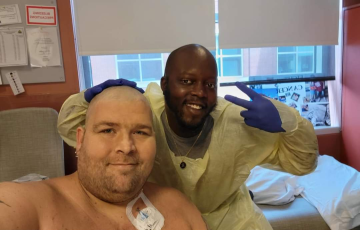
James
My story starts like everyone else’s. I was living my life, working every day, and coming home to my four children and my wife. But my wife and I started to notice how tired I was becoming. I would always sleep. I could just be waking up, and by the time I got ready for work, I was passing out in my chair. When I got a lunch break, I would sleep in my truck. I would always feel like I couldn’t get enough to drink; I was always thirsty. I barely ate anything, and I was getting fevers and the shakes. I could be hot and sweating, but I would be cold and shaking if that makes any sense.

Paul
I was first diagnosed with acute lymphoblastic leukemia (ALL) at age 25 and since then I've had two bone marrow transplants and CAR-T. For the past 8 years I have been on and off "healthy" and undergoing or actively recovering from treatment. I talked about some of the things I did during those treatments to help my motivation and morale, but there is a lot about the treatments themselves that were unique to someone like me, a mixed race, young adult with blood cancer.
NHL Staging
Once your doctor confirms an NHL diagnosis, he or she will determine the extent of your disease's progression by staging. Staging helps your doctor predict the disease's progression and develop a treatment plan.
Staging TestsImaging Tests
Your doctor conducts one or more imaging tests along with a physical exam, to evaluate:
Methods to Administer Drugs
Chemotherapy and other drugs are often given in combination with each other and can be given in different ways. The method of administering the drug is based on the actual disease diagnosed and the agent's effectiveness. Common methods include:
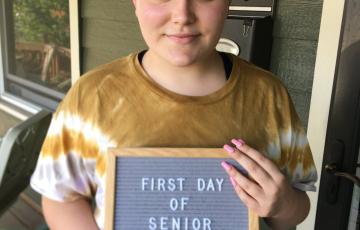
Madeleine
We were lucky. It seems strange to frame it that way, but it's true.
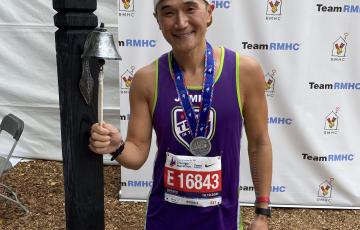
James
I was diagnosed with stage 3 follicular lymphoma (FL), a type of non-Hodgkin lymphoma (NHL), at the end of 2017, and our world was turned upside down. I lived a pretty healthy lifestyle, stayed active, and ate well. I never thought I would be diagnosed with cancer until I received the phone call from my hematologist/oncologist late on a Friday night. My body went numb as I listened to the diagnosis and the aggressive treatment plan around the corner.

Richard
“I have lost my hero, I have lost my friend, but for you, my darling, I would do it all again.”
I feel so blessed to have had the joy of meeting her and sharing our lives together. For so many reasons, it should have never happened. The words that start this story are from a St. Vincent song in New York because it succinctly paints a picture of what was and did happen.
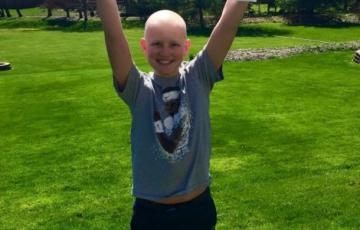
David
On June 17, 2014, 12-year-old David Stim visited his pediatrician's office to have a routine school physical. During the exam, the nurse practitioner noticed an enlarged lymph node on the right side of his neck and surmised that it probably due to a reaction to something, as is almost always the case in pediatrics. Since David had been treated for strep throat the month before, there was not much cause for concern.

Yesenia
My name is Yesenia and this is my story. I began my first semester of university in fall 2017. While I was away for college I started experiencing some symptoms. It started off with nausea, after the first couple weeks of fall semester I would experience this sensation that left me bed ridden. This led me to go back to my family home so I could be better taken care of. I knew at that point that something wasn't right, so I took a trip to Urgent Care where I was told I was Anemic, but with a better diet I would go back to normal.
Lori
Lori’s journey to becoming a Leukemia & Lymphoma Society (LLS) volunteer began back in 2002 through her own experience with being diagnosed with Myelofibrosis (MF). Lori had just embarked on a new job as a real estate agent to a new home builder when she began to feel extremely tired and have pain in her hands. She chalked up her sickness to a case of the flu; however, after deciding to go to her doctor, he recommended some blood work which came back showing high white counts. Her doctor referred her to an Oncologist who did a bone marrow biopsy.
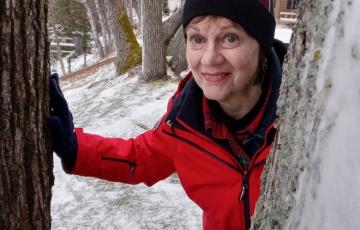
Barbara
While enjoying a 2021 spring vacation with my husband in Kentucky, I began to feel severe pain in my right arm. Over several hours, the pain increased, but I didn’t want to interrupt our vacation plans with a hospital visit. By late evening, my husband could tell that we must get to an emergency room PRONTO! But where in this large city can we find one? We finally stopped at a Home Depot store and asked for directions. After searching on darkened streets in a strange city, we found the emergency entrance to a hospital.
Yeah!
Kathy
I can draw a hard line between my old life and my new reality, and this was the day I was diagnosed with acute myeloid leukemia (AML) in August 2022. Looking back on that day, I realize I didn’t have any idea what was ahead and what would be required of me, but I came to a quick realization I needed some sort of routine to make it through each day.
LLS Scholarship for Blood Cancer Survivors
The Leukemia & Lymphoma Society (LLS) knows how challenging it can be to plan for your future during or after cancer treatment. Hospital stays and interruptions in school may mean pausing your goals. And the high cost of cancer care can make affording higher education difficult.
Myles
I’ve always known that I wanted a career in sports in some capacity. My dream since I was in the third grade has been to become a professional football player, but I also was taught the reality of that dream. When you’re little of course you just want to be what you want to be, but as you get older you start to learn what can be in your reach and what the true reality is. As I grew older, I started to think about life after high school football and even college football, if I am blessed with that opportunity.

Sonny
The last conversation I had with my daughter Sonny was one that I will never forget. As she sat there exhausted from the leukemia and CDiff and sepsis that was ravaging her body; we talked about how much of a fight she put up. She could only respond with a short, “I know Momma”. To which I replied, “You don’t have to fight anymore baby.” Again, “I know Momma”. I told her that her Poppa was waiting in Heaven on his tractor to take her for a ride like she used to love when she was little.
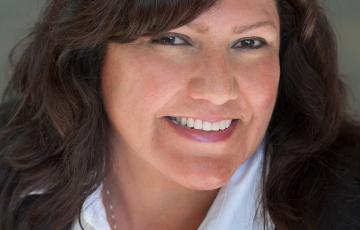
Diana
My introduction to The Leukemia & Lymphoma Society (LLS) began in the early 2000s. I joined a Light The Night Team to support research and programs for cancer patients. I then discovered Team In Training and ran my first marathon and my second as a Team Mentor. At the time, I knew cancer was a terrible disease, but it wasn’t until 2012 that cancer became more personal. In May 2012, my cousin Richard, who was like an older brother to me, passed away from pancreatic cancer. Just two years later, my mother was diagnosed with breast cancer.

Naomi
My story begins when I was 11 years old, and I remember it being the summer after my sixth-grade year. I had just made the volleyball team and was so excited about that and the upcoming school year. I don't know if you remember middle school, but it was a bit of an awkward time, so I was looking forward to getting older, becoming surer of myself, and making more friends. Unfortunately, at some point during the summer, I started to feel fatigued.

Bruce
I was diagnosed with stage III mantle cell lymphoma (MCL) in October 2004 following a routine physical exam. I wasn’t feeling ill, but since I quit smoking many years ago, as a precaution, my primary care physician recommended having a computed tomography (CT) scan of my lungs to see if I had any residual damage.
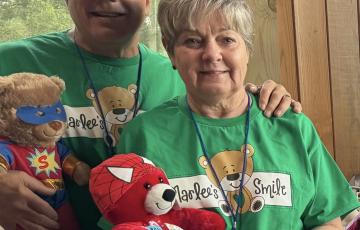
Mark
My wife, Linda, and I celebrate and lament our first anniversary; I was diagnosed with chronic myeloid leukemia (CML) on June 5, 2023. While death is not impending, our future has radically changed. There are losses, namely a more predictable and imaginable future. Certain certainties are broken that cannot be fixed. We search for new norms that require reimagining hopes, dreams, and aspirations. Of course, we will not give up on illness-specific hope that remission comes sooner than later and that side effects subside. No proof exists that we will get what we hope for.
Pain Treatment
Pain can be managed effectively in a number of ways, depending on the cause and type of your pain. Treatments may include:
Options for Egg Preservation
You may be able to take certain steps and precautions to preserve fertility before, during and after treatment.
The Affordable Care Act (ACA)
The Affordable Care Act’s Patient ProtectionsThe Affordable Care Act requires health insurance plans sold through www.healthcare.gov and its state-based marketplaces to comply with a number of requirements. Many of these – including the ones described below – are meant to ensure that patients have access to meaningful health insurance coverage. It’s important to be aware that some health plans, available today through non-governmental sites, may not include these patient protections.
